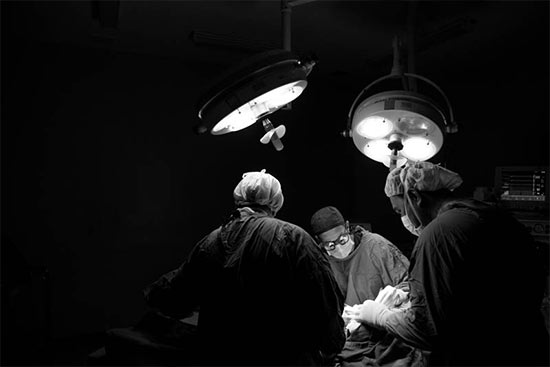Abdominoplasty (Tummy Tuck)
An abdominoplasty (commonly known as a tummy tuck) is a surgical procedure performed to reduce the bulk of the lower abdomen and can also include tightening and strengthening of the abdominal muscles.
What is an abdominoplasty (tummy tuck) procedure?
An abdominoplasty can be both a cosmetic as well as a functional/medical procedure, particularly after significant weight loss, or the changes associated with pregnancy. The loose or excess tissue on the lower abdomen is surgically removed. At the same time, if there is associated laxity or weakness of the abdominal muscles, these can be repaired and tightened. The umbilicus (belly button) is retained in its original location.
What are the benefits of the procedure?
This operation is performed commonly, and can be performed with some additional liposuction on associated fatty deposits such as the flanks, hips, or thighs.
Removal of the excess lower abdominal tissue can lead to improved comfort, and reduce the incidence of skin rashes or infections in the folds beneath the loose skin. Repairing the separation in the abdominal muscles, which is common after pregnancy, can lead to increased abdominal strength, and a reduction in associated symptoms such as lower back pain and instability.
Is Mr Morgan experienced in this procedure?
Mr Morgan has had many years of experience in performing abdominoplasty surgery. At your consultation, he will be able to show photos of his other patients who have undergone this procedure to give a sense of what change can be achieved. These results are specific to these patients, and may not accurately reflect the types of result you may achieve. All results can vary for a number of reasons, including differences in genetics and original appearance, as well as differences in healing and recovery. Despite all care being taken, complications can and do occur, and can also affect the final result. Occasionally, revisional surgery is required.


How is it performed?
Abdominoplasty is performed under general anaesthesia and requires a stay in hospital of one or two days afterwards to ensure your comfort and safety.
Markings performed prior to the operation will show you the amount of skin to be excised, as well as the length and placement of the scar. The most common concern after this operation is the length and visibility of the scar. Every effort is made to limit the length of the scar, and to place it in a location where it will be hidden under normal clothing and swimwear. These details will be discussed during your consultations.
The wounds are generally closed with dissolving sutures and are covered with waterproof dressings, allowing you to shower as soon as you feel comfortable. You will be asked to wear a compression garment (similar to a girdle) for support and comfort during the first few weeks.

How long will I need to recover?
Everyone will have a different experience and will recover from their surgery differently. Although uncommon, complications can also occur and can result in a longer recovery time. Generally, discomfort is limited and well-controlled with tablet pain relief medication, but mobility can be a bit restricted for a few days.
The compression garment is worn day and night for several weeks to provide support for the healing area. You will need to demonstrate that you can remove the garment and shower prior to discharge. Your first post-operative appointment will occur 7 to 10 days after surgery to check your wounds, change the dressings, and discuss ongoing wound and scar management.
Gentle walking is encouraged as soon as you feel well. Typically, most patients will recover enough to return to social activity and office-based work after three weeks. Return to exercise is allowed from four weeks, and activity is usually unrestricted after six weeks. Swelling can often persist for many weeks after surgery until the final result is achieved.
Specific Risks and Complications
Abdominoplasty surgery has several potential specific risks:
- Bleeding, infection, poor quality or visible scars, prolonged wound healing, skin necrosis (tissue loss), blood loss requiring transfusion, asymmetry, permanent numbness in the abdominal skin, irregular contours, umbilical abnormalities, umbilical necrosis (tissue loss), dissatisfaction with the cosmetic outcome, need for revisional surgery
- This is not an exhaustive list of potential risks. Every patient responds differently to surgery and anaesthesia, and can heal and recover differently. Individual results can vary. The results experienced by one patient do not always reflect the results other patients may achieve. Potential outcomes and possible variations will be discussed during your consultations
All Surgical Procedures Carry Risks
Before proceeding, you should seek a second opinion from an appropriately qualified medical practitioner.
Individual results may vary due to a number of factors, including genetics, and variations in healing and recovery, and the potential for complications. The outcomes experienced by one person do not necessarily reflect the outcomes that other people may experience. Potential outcomes and possible variations will be discussed during your consultations
Cosmetic surgery is real surgery, and will most often require a general anaesthetic. All surgery will require a period of recovery before returning to normal activity, as outlined in the particular procedure information. Although uncommon, complications can and do occur, and may affect the final result of your surgery. The potential risks will be discussed fully during your consultations, and you will have the opportunity to ask questions about the various risks in your particular circumstances. Risks may include the general risks of surgery, as well as the risks specific to the procedure, and include poor quality scarring, excessive bruising and swelling, infection, bleeding, pain, asymmetry, nerve injury, anaesthetic complications, drug reactions, unsatisfactory cosmetic outcomes, the need for further surgery, and permanent disability and death.
As a specialist plastic surgeon, Mr Morgan is appropriately trained and qualified to deal with complications of surgery, including the ability to admit you to hospital, if required.
Who should/should not consider the abdominoplasty procedure?
You should not consider this type of surgery as a response to a personal or professional crisis, or under the encouragement of anyone other than yourself. Any decision to undergo surgery should be for the right reasons. All surgery entails an element of risk, and you should not make any decision regarding surgery during times of stress.
Tummy Tuck (Abdominoplasty)
Being healthy and happy with your decision can help to increase the chances of achieving a satisfactory result with your surgery. Smoking, other medical conditions, and being overweight can make surgery potentially unsafe. These and other risks will be discussed with you at the time of your consultation.
To find out more information about tummy tuck (abdominoplasty), or to book an appointment, please contact us.
